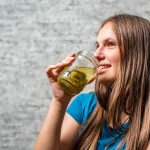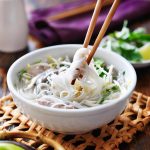Aren’t rice noodles and vermicelli the same thing? No, they are not and this article will explain it further.
Vermicelli can be rice noodles but rice noodles can’t always be vermicelli. Vermicelli is a wide umbrella of pasta and noodles. There are two types: Italian and Asian, but vermicelli is more classified according to its main ingredients such as wheat, rice, bean, or rice.
So, if you want to learn more about the differences (and some similarities including the multiple types of vermicelli), just keep on reading!
Differences Between Rice Noodles and Vermicelli
Vermicelli can be rice noodles. However, you can’t say the same for rice noodles.
Today, vermicelli noodles are differentiated from each other based on their ingredients more than their origins. The four major types of vermicelli are those made with wheat, rice, beans, or starches, with wheat being the most common.
With this said, let’s explore some other key differences between rice noodles and vermicelli.
Ingredients
Vermicelli made with rice is also called rice vermicelli or rice noodles. The latter name is what it’s more commonly known as (source: The Supplemental Nutrition Assistance Program).
Have you ever wondered if rice vermicelli noodles are good or bad for your health? Take some time to dive into my thought-provoking guide and discover the truth behind rice vermicelli noodles’ impact on your well-being.
Vermicelli made with wheat can be in many variations. Among these are the Italian pasta vermicelli and Mexican fideo (source: Greatist).
Vermicelli pasta is made with semolina flour taken from durum wheat. Dried vermicelli pasta can be made with water, while the fresh type can be created with eggs (source: Delighted Cooking).
Vermicelli made with beans are a category of their own and are probably the more popular type than rice vermicelli. Arguably.
This type is most popular in East Asian cuisine. An example is the mung bean vermicelli, which is also called “cellophane noodles”, “bean threads”, or “bean thread noodles”.
Last but not least is vermicelli made from starches. The starch is usually a root starch like potato starch and sweet potato starch. A good example of this is the Korean glass noodles used in Japchae.
Starches like tapioca are also sometimes added to rice noodles to make them stable because these types of noodles can easily break whether cooked or uncooked (dried) (source: Washington Post). Other starches such as cornstarch and sago starch are also made into vermicelli.
If you’re a fan of vermicelli noodles and curious about their gluten-free status, check out this article. It provides valuable insights on vermicelli noodles and gluten, including expert tips to help you identify gluten-free options.
Origins
Vermicelli pasta hails from Italy. Fideo stems from Mexico while Falooda originates in India. Cellophane noodles made with potato starch are common in Japan and China, while those made with sweet potato are popular in Korea (sources: Greatist, Delighted Cooking).
Shape, Size, and Appearance
Like spaghetti, vermicelli is long and thin. The difference is held in their width. Moreover, vermicelli in Italy is slightly thicker than spaghetti, while in the US and English-speaking countries, spaghetti is thicker than vermicelli (source: The Spruce Eats).
Fideos are vermicelli pasta, only shorter, at around one inch in length. Like Italian vermicelli, they are yellowish. If you’re intrigued to learn more about the distinctions between fideo and vermicelli, take a peek at my guide that explores this topic in detail.
Rice noodles are opaque white while glass noodles and cellophane noodles are transparent.
Nutrition
Rice noodles and all types of vermicelli pasta are rich in carbohydrates. Vermicelli in Asia can also be fortified with other nutrients. Both Italian and Asian vermicelli are staples in these regions.
Vermicelli is generally healthy but not in excess as it is abundant in carbohydrates. Eating too much carbohydrates can lead to an increased risk of many diseases (source: Obesity Pillars).
What you cook your vermicelli with will add to its nutrient content whether positively or not. Moreover, rice, bean, and starch-based vermicelli are gluten-free which is in favor of those with gluten intolerance.
Calories
Because vermicelli, both Italian and Asian is rich in carbohydrates, they are best eaten in moderation if you are trying to cut down on calories. Italian vermicelli also contains a considerable amount of protein due to durum wheat source: The World of Food Grains).
Cooking Time
Italian vermicelli takes more time to cook compared to Asian vermicelli of the same weight per serving. This is because durum wheat is very tough (source: The World of Food Grains). Rice noodles cook for a very short time.
If you’ve ever wanted to master the art of cooking vermicelli noodles perfectly, dive into my guide to elevate your vermicelli noodle game to a whole new level. It provides step-by-step instructions on how to achieve that ideal texture and flavor for vermicelli noodles in various dishes.
Preparation
Vermicelli pasta or Italian vermicelli is popular not just in Italy but in many parts of Europe as well since it originated in the continent. This vermicelli is cooked the same way spaghetti or angel’s hair is, like cooking it with pesto, marinara sauce, chicken, etc.
Fideo is popular as a dish of the same name, where it looks like spaghetti and is somewhat cooked like spaghetti, except for the first part where it is browned in the pan in hot oil.
Asian vermicelli takes on different cooking process and dishes as they are more versatile in Asia.
For example, in Korea, they are made into Japchae, which is a stir-fried glass noodle dish with vegetables. In Vietnam, glass noodles can be filled into Vietnamese rolls (source: Washington Post).
Vermicelli has tons of variations and we can prove this by searching on the web alone. The truth of the matter is that because of its widespread popularity, vermicelli has evolved into not just one or a few varieties, but into multiple different types.
If you want to explore the unique qualities of vermicelli and how it stands out among other dishes, read through the article that dives into this subject.
The difference between rice noodles and vermicelli starts with their raw materials or ingredients, which will be followed by their uses, cooking time, and so on. One thing is for sure, they both taste great however you prepare them!
We hope you found this article helpful!


![Are Rice Noodles and Vermicelli The Same? [The Differences] A black square dish filled with rice vermicelli topped with chunks of chicken, garnished with sliced scallions and red pepper flakes. The healthy meal is elegantly set on a bamboo placemat.](https://cuisineseeker.com/wp-content/uploads/2023/01/rice_vermicelli_noodles_-768x457.jpg)





Comments are closed.